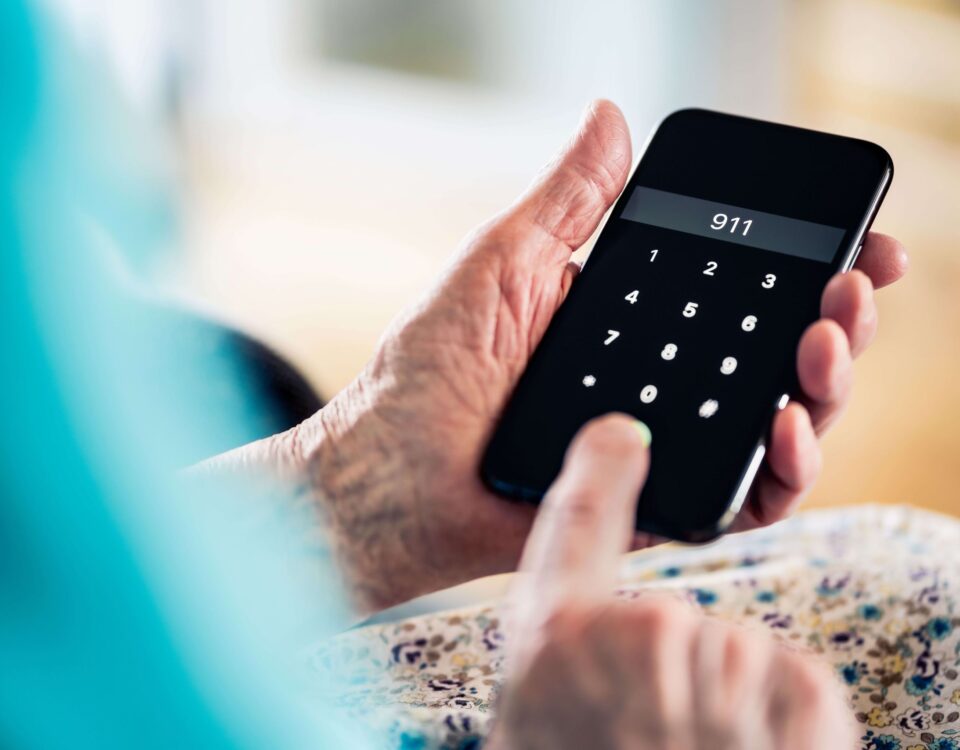- Have any questions?
- 412-123-4567
- noreply@upmc.com
How to Deal With a Bleeding Emergency While Babysitting

As a babysitter, you may have to treat a nosebleed, cut, or scrape. When babysitting for a new family, always ask where to find first-aid supplies, including bandages and gauze.
Read the guide below so that you'll know how to stop bleeding quickly and how to treat a wound.
If a child is losing a lot of blood or you think the child is seriously injured, call 911 right away.
When to Call 911 for a Bleeding Injury
You should call 911 if:
- The wound is spurting blood, pooling with blood, or flowing continuously.
- The bleeding doesn't stop after a few minutes of applying constant pressure.
- The child is having difficulty breathing or is breathing very rapidly.
- The child is coughing up blood or vomiting blood.
- Clear fluid or blood is coming out of the child's nose or ear after an injury to the head.
- The child vomits after a head injury.
- The child is dizzy or confused after a head injury.
- The child has a seizure or convulsion after a head injury.
- The child becomes pale or sweaty after an injury.
- The child doesn't respond to you the way they normally would.
- The child has lost consciousness.
- The child may have injured their back or neck.
In Case of a Possible Head, Neck, or Back Injury
You should always call a child's parents if a child hurts their head, even if the injury doesn't seem serious. Their parents may need to watch them more closely for signs of a concussion, such as headache, nausea, or changes in mood or behavior.
If you think a child may have injured their neck or head, don't move them unless they are in immediate danger. Moving them could seriously worsen the injury. Wait until first responders arrive.
How to Stop Bleeding: Serious Injury or Deep Cut
If the child has a serious injury or a deep cut that is bleeding heavily and doesn't stop, call 911. At the same time, attempt to stop the bleeding at home by applying clean gauze and pressure.
Follow these three steps to stop severe bleeding:
- Put gauze on the wound and apply constant pressure with your hands. If gauze isn't available, you can use a clean article of clothing, such as a shirt or sock. If possible, the child may help you keep pressure on the wound.
- Hold the pressure until the bleeding stops. If it doesn't stop within a few minutes, call 911. Keep the pressure on the wound until emergency responders arrive. Resist the urge to look at the wound before the bleeding stops. Removing the bandage will interfere with clotting, and the bleeding will take longer to stop. If available, wear gloves to protect yourself from bloodborne pathogens.
- If the blood soaks through the gauze or clean clothing, don't remove it. Instead, add more gauze or clothing on top and continue to apply pressure. If bleeding is on the arm or leg, continues despite pressure, and you have a tourniquet you’ve been trained to use, apply it above the wound.
At the same time, call the child's parents. If a wound is deep or gaping, they'll need to take the child to the emergency department for stitches.
Don't clean a deep cut. A nurse can clean the area at the hospital or doctor's office.
How to Treat a Minor Cut or Scrape
A minor cut or scrape stops bleeding after you apply pressure. For example, you want to stop bleeding on a child's finger from a cut that isn't deep or gaping open.
To quickly stop bleeding when a child has a minor cut or scrape, apply pressure with clean gauze. Hold the pressure for as long as necessary, it may take a few minutes.
Next, clean the area with soap and water. Make sure you clean the injury well enough so that no dirt remains. If the child doesn't want you to clean the wound, they may opt to take a bath.
If an antibacterial cream or ointment is available, you can put a small amount on the wound after cleaning it. An ointment like Vaseline won't stop the bleeding but can help in recovery by keeping the wound clean and moist. Then, cover the wound with a bandage or clean, dry gauze.
Make sure you explain to the child's parents how the injury happened.
How to Stop Nosebleeds and Deal with Mouth Injuries
Nosebleeds are common in children and are not a cause for concern — unless a child is bleeding from the nose after a head injury. In most cases, nosebleeds happen because dry air cracks the skin in the nose or because of nose picking.
If a child gets a nosebleed, don't have them lie down or tilt their head back. This position can cause blood to flow into their throat.
Instead, ask the child to pinch their nose. Or, you can pinch the soft part of the child's nose for them. Use a piece of tissue or glove to avoid getting blood on yourself, but don't put tissue or anything up the nose.
Ask the child to tilt their head slightly forward while they sit or stand.
The nosebleed should stop within 10 minutes. You and the child can read a book together or watch TV to pass the time. If the bleeding starts again, repeat the process.
If dry air causes a nosebleed, putting some Vaseline in the child's nostrils can stop another bleed.
If a child falls and is bleeding from the mouth, run a piece of gauze under cold water. Then, press it against the child's gums.
If the child is old enough, you can ask them to bite down on it or hold the gauze in place.
For severe mouth injuries with significant bleeding, or if teeth are dislodged, contact the child's parents and seek medical advice. For any mouth injury causing bleeding that interferes with the child’s breathing, call 911.
Consider taking a STOP THE BLEED® course or reading more about bleeding emergencies on the Minutes Matter website.



